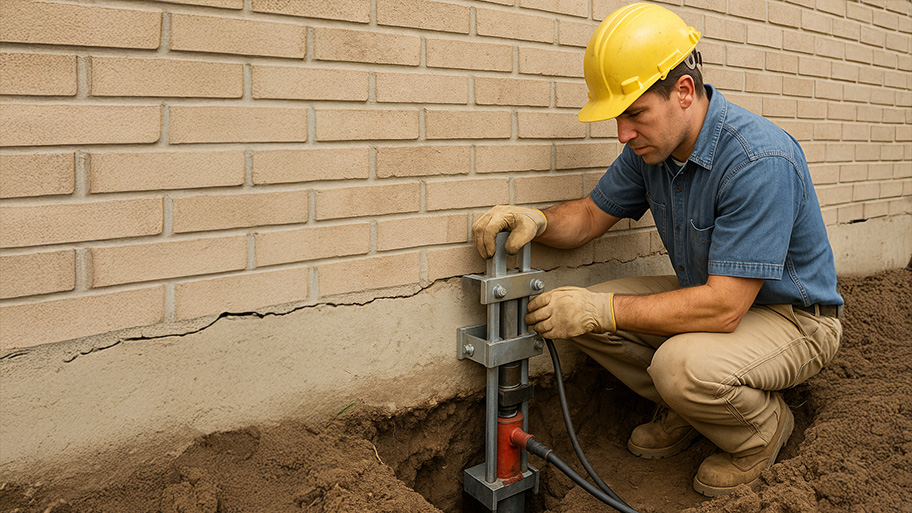
When a sill plate begins to crumble, it needs to be replaced ASAP. But how much does sill plate replacement cost? Here's what you need to know.
Help your crawl space help you by protecting your home from below


The modern way of dealing with crawl space insulation is a multi-step process that's far more effective as a thermal and moisture barrier and better tailored to your climate. Here's a look at the eight essential tips for insulating a crawl space.

Local building codes regulate crawl spaces, their construction, and insulation. Before starting work on insulating your crawl space, consult the local building code to ensure you're following best practices using the most up-to-date information regarding the subject.

While foundation repair costs are never fun to deal with, it's better to handle any problems before spending time, effort, and money insulating your crawl space and potentially covering up issues that could cause further trouble later. If there's a chance your home's foundation may need attention, consult a local foundation repair expert to determine the next steps before insulating.
Poor insulation in your crawl space may be only one part of the problem. Standing water in crawl spaces is a common problem that has many causes. Part of keeping your crawl space dry is effectively handling any foundation drainage issues before attempting to take care of other moisture issues.
Some solutions to consider for eliminating standing crawl space water are to extend downspouts away from the home, clean out the gutters, and seal any cracks in the foundation. For extensive standing water problems, you may need to install a French drain, waterproofing, or sump pump system.
Construction theories from long ago about venting every crawl space are long gone. The new thought is that if you live in a dry, warm climate, a vented crawl space works just fine, and you can ignore this step. However, encapsulating your crawl space to keep air and moisture out is the best option for all other locations.
Seal off the existing foundation and crawl space air vents from the outside. Use treated plywood, plastic, or other flat panels to cover them up. Install caulk around their edges to completely seal them from water or air intrusion. Seal your access panel door by installing weatherstripping around its edges, whether it's indoors or out.
In most situations—except for vented crawl spaces in dry, warm locations—avoid insulating the ceiling of your crawl space. Leave the joist spaces open to the air inside the space and exposed to the conditioned rooms above.
If you live in a dry climate and leave your crawl space vented, you can insulate the ceiling with moisture-resistant foam board or spray foam insulation spanning the ceiling joists. For higher efficiency, you can fill the joist spaces above any foam board insulation with fiberglass or spray foam insulation. However, consult local building code requirements and an expert before choosing this method.

Avoid using fiberglass or cellulose insulation when insulating a non-vented crawl space. That said, insulate your foundation walls by completely covering them with foam board insulation with an R-value appropriate for your location and building code. Attach the foam board with construction adhesive, cap screws, or both. Fill the spaces between the sheets with spray foam sealant or caulk to seal them.
Another common solution is completely covering the foundation wall surfaces with spray foam insulation. However, the technique can drive up the cost of encapsulating the crawl space for homes with large footprints.
The rim joist is particularly susceptible to condensation forming due to temperature differences between the inside and outside of the crawl space. Install spray foam insulation over all the rim joist and sill plate surfaces to meet the appropriate R-value for the climate in your location.
Alternatively, you can install foam board pieces cut to fit into the joist spaces along the rim joist. Seal the edges with foam sealant or caulking to make a complete seal.
To complete your crawl space insulation project, you'll need a floor vapor barrier to eliminate any moisture coming up from the ground underneath. Lay 4- or 6-millimeter plastic sheeting over all the dirt floor surfaces, leaving several extra inches on each edge where it meets the wall insulation.
If multiple sheets are necessary, overlap each sheet by 6 to 12 inches and seal the seam with vapor barrier sealing tape. Go around the crawl space edge using sealing tape to adhere the vapor barrier's edge to the foam board insulation.
If you plan to use your crawl space for storage, install a thicker vapor barrier of up to 8- or 10-millimeter plastic sheeting to stand up to the added traffic.
From average costs to expert advice, get all the answers you need to get your job done.

When a sill plate begins to crumble, it needs to be replaced ASAP. But how much does sill plate replacement cost? Here's what you need to know.

Foundation repair costs can be tricky when you have a large repair on your hands. This guide walks through costs from small cracks to total replacement.

Whether trying to protect it or transport it, raising a house is no small feat. Read on to find out everything you need to know about the cost to raise a house.

Ask these 16 questions about experience, pricing, timelines, and more to choose the best professional for your concrete project.

Keep your home’s crawl space in good condition to prevent pests, moisture problems, and structural damage. Use this checklist to guide your inspection.

All foundations crack from normal settlement, but knowing when to worry about cracks in a basement floor can help avoid worsening structural damage.